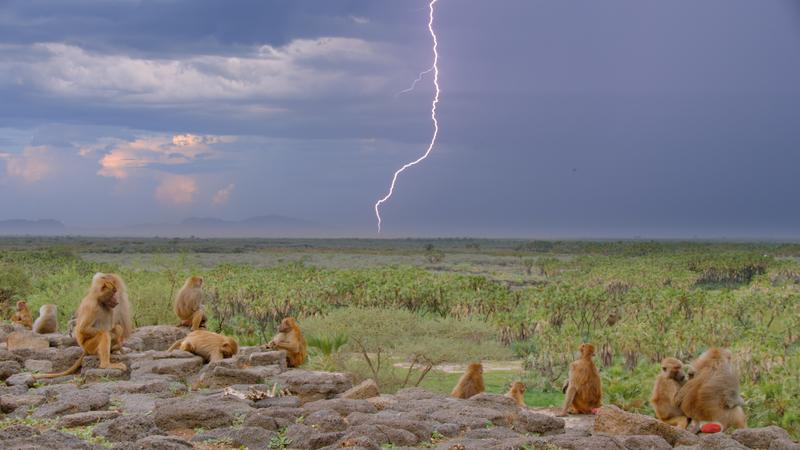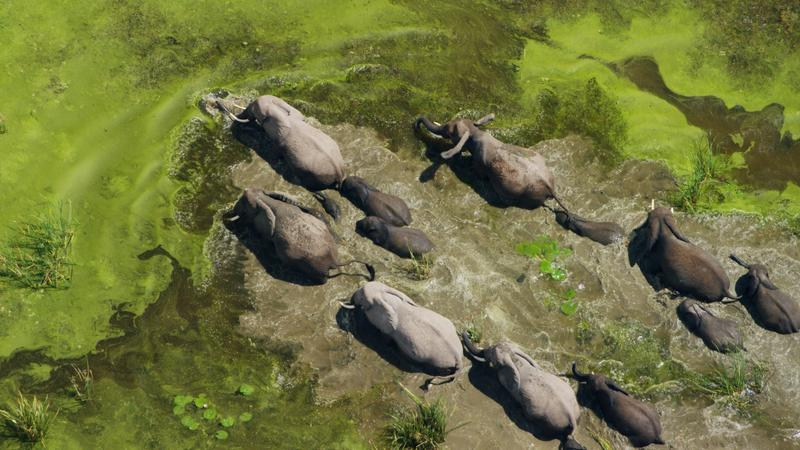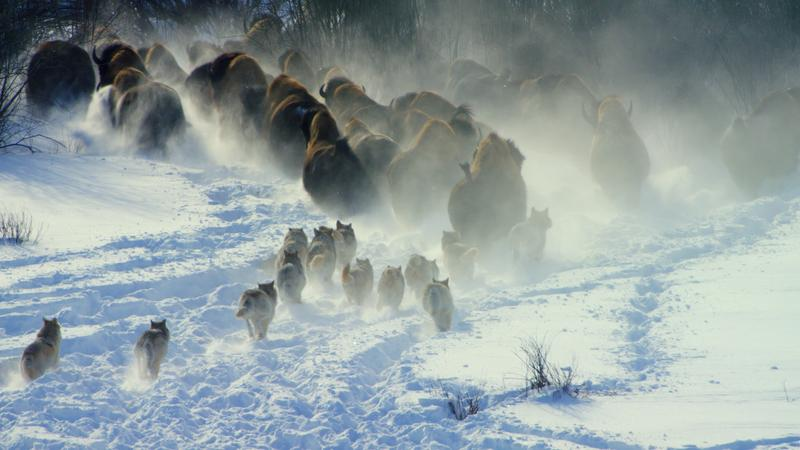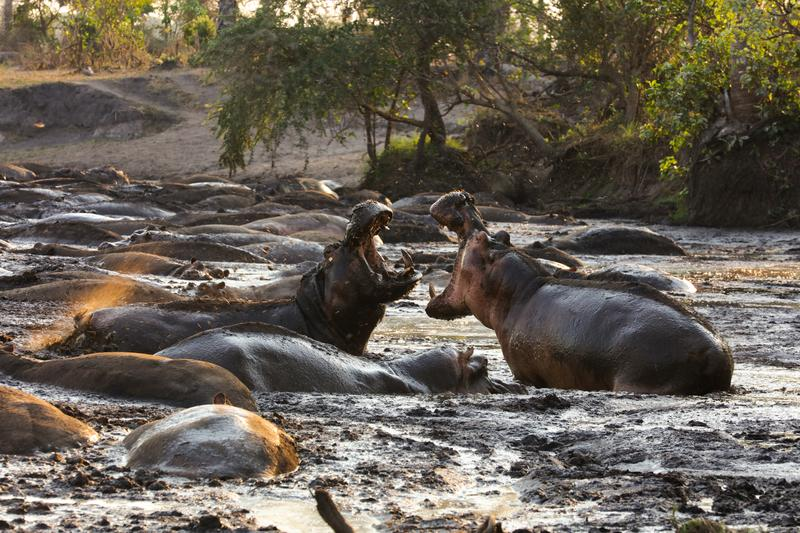National Geographic’s new mini-series, Hostile Planet, is unlike any nature documentary you’ve ever seen before. The best way to describe it would be to say that where Disneynature would cut to another scene, Hostile Planet keeps the cameras rolling. The emphasis of the series is on the harsh realities of nature and how miraculous it is that these species have survived against the odds.
Survival expert Bear Grylls is your host for this six-part series where each episode focuses on a different terrain. He films his introductions from each, including mountains, oceans, grasslands, jungles, desserts, and polar. His survival skills allow him to explain the animal instincts in a way that makes sense. He remains objective, allowing the audience to infer their own emotions on each sequence.
The show is at times hard to watch and it starts on such a note, with a trio of barnacle gosling chicks jumping off a high cliff shortly after hatching. The survival rate is only 33.3%, and from this point on you will meet many other animals who are either victims of their environment or predators. They aren’t all equally sympathetic, but you can’t help but feel heartbreak when you watch a young elephant get picked off the herd by a pack of lions.
One of the show’s biggest strengths is the cinematography, where nearly every shot begs the question “How did they film this?” This footage is presented in stunning high definition and the cinematographers clearly risked their lives and captured these shots at great personal sacrifice. I would love to see a bonus episode that focuses on the making of the series.
Like a Disneynature film each episode focuses on a few key animals in each terrain and revisits them. The episode “Oceans,” for example, starts with sea turtles hatching on a beach and trying to make it to the ocean. The turtles are revisited several times and even close the episode, with a mature female returning to the beach she was born on to lay her own eggs. The turtle mating rituals are shocking and almost deadly for the female, which is something you don’t often hear about.
Some of your favorite animals are surely featured in the series, including snow leopards, sharks, sea turtles, orcas, elephants, lions, cheetahs, jaguars, orangutans, hummingbirds, meerkats, spiders, polar bears, seals, and penguins. The subjects are so diverse and varied that even an animal expert is sure to learn a lot through the series. It’s a perfect mix of entertainment and education, including a lot about how climate change is affecting animals in each location while not diving into the reasons behind climate change, which is covered in other National Geographic programs. It remains focused on its own topic 100% of the time.
I was captivated and hooked throughout all six episodes of Hostile Planet. I’m a big fan of Disneynature films and this series is like a next step for viewers ready to move away from kid-safe animal programming. This show is not for the entire family, but offers something different from a genre I love so much.
I give Hostile Planet 5 out of 5 hungry hungry hippos.




